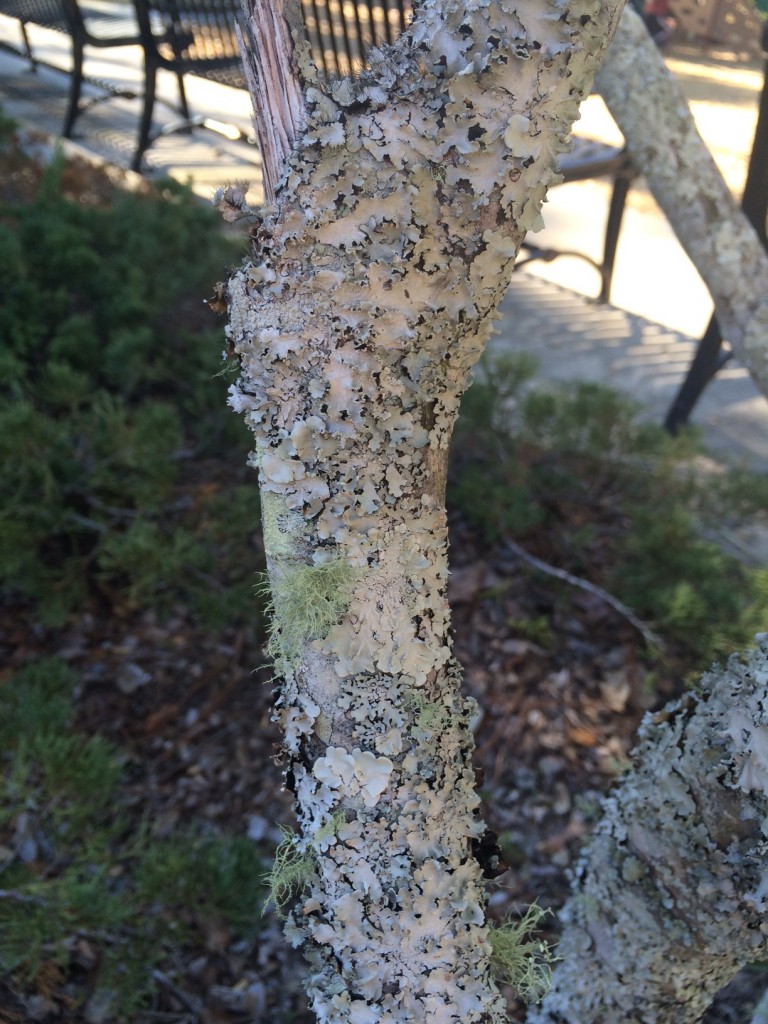Help your kids see their surroundings in a brand new way when you take them outside on a lichen hunt. This small green plant that frequently grows on the bark of trees but which can also appear on concrete walls and other outdoor surfaces. In actuality, this small plant is a fungus that has a symbiotic relationship with the rocks and the trees that it grows on. There are many different types of lichen. Read these descriptions to your children and then take them outside to see how many different types of lichen you can identify.
Crustose
When you think of crustose lichen, think of the word “crusty.” This type grows against the surface and can be identified by it’s flat edges. If you see this lichen on your tree, do not remove it. Because it is so close to the bark, it is nearly impossible to remove this lichen without causing damage to the tree.
Fructicose
Fructicose is one of the easiest types of lichen to notice and it is extremely popular. Fructicose looks very much like small shrubbery. The combination of a fungal outside and an algae inside results in a structure with multiple branch-like shapes that reach away from the tree or rock it grows on. This type of lichen’s shape makes it look very muck like spanish moss, on a much smaller scale.
Foliose
The third main type of lichen is called foliose. This version looks very much like a small leaf. The light green color grows with curled edges and stands just a little bit off of the surface of the tree or rock it grows upon. This type grows in a circular form with bottom and top layers that are different from one another.
How many of these types of lichen you your child identify in this picture? If you look closely, all three types are present. Now that you know what each one looks like, head out to your front or back yard and look for them on your plants and hard surfaces.
About Philip Travers
Twitter •



 WishLists
WishLists
 My Account
My Account






